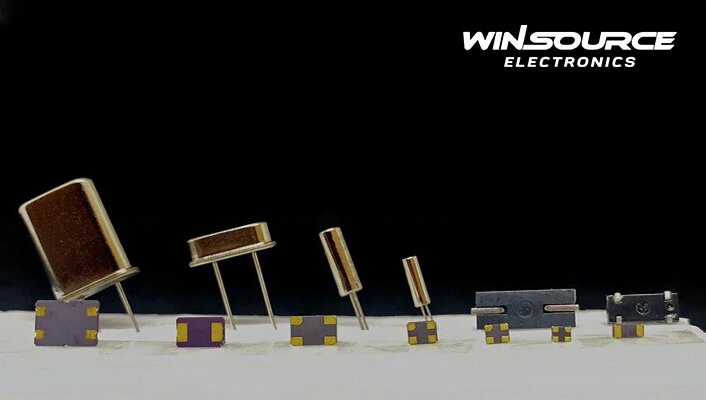
Oscillators are fundamental components in electronics. They act as the heartbeat generators for a vast array of devices, generating periodic waveforms of various shapes, which are critical to countless applications ranging from radio frequency (RF) systems to computer clocks. This article provides an overview of the different types of oscillators and their unique characteristics.
Table of Contents
ToggleHarmonic or Linear Oscillator
Harmonic oscillators generate sinusoidal waveforms and their operating principle relies on the principle of resonance.
- LC oscillator (tank circuit): Consisting of an inductor (L) and a capacitor (C), these oscillators generate waveforms through an LC resonance circuit. Types include Hartley, Colpitts, and Clapp oscillators.
- RC Oscillators: RC oscillators, such as phase-shift oscillators, use resistors and capacitors to generate waveforms typically below 10MHz.
- Crystal Oscillators: are the most accurate of all oscillators, they rely on the piezoelectric properties of quartz crystals. When a voltage is applied, it resonates at a specific frequency, providing a stable frequency of oscillation.
Feature
- Generally sine wave output
- Stability depends on components and temperature sensitivity.
Relaxation oscillator
A relaxation oscillator generates a non-sinusoidal output, such as a triangle or square wave.
- RC Relaxation Oscillator: Usually used in applications that need to generate low frequencies, it consists of resistors, capacitors and operational amplifiers.
- UJT Relaxation Oscillator: This oscillator type uses a Unijunction Transistor (UJT) and is often used in timing circuits.
Feature
- Non-sine wave, usually sawtooth wave, triangle wave or square wave
- Poor stability compared to harmonic oscillators
Voltage Controlled Oscillator (VCO)
The VCO changes its oscillation frequency according to the input voltage. They are important components in phase-locked loops (PLLs) and frequency synthesizers.
Feature
- The frequency is determined by the input voltage
- Input-based frequency generation versatility
Photoelectric oscillator
These oscillators combine optical components with electronic circuitry to generate highly stable microwave signals.
Feature
- Optical and electronic components integration
- High stability and spectral purity
Microwave oscillator
These oscillators operate in the microwave frequency range and are used in radar, satellite communications, and other RF applications.
- Gunn Diode Oscillator: This oscillator uses a Gunn diode and can generate frequencies from 10GHz to hundreds of GHz.
- Dielectric Resonator Oscillator (DRO): DRO utilizes a dielectric resonator to provide a higher Q factor and is used in satellite receivers and other RF systems.
Feature
- High-frequency operation
- Commonly used in RF and microwave systems
In conclusion
From regulating the rhythm of clocks to enabling high-speed communications, oscillators play an integral role in modern electronics. Their different types and characteristics highlight their adaptability and importance. As technology continues to advance, exploration and innovation in oscillator design promises to pave the way for more complex electronic systems and applications

COMMENTS